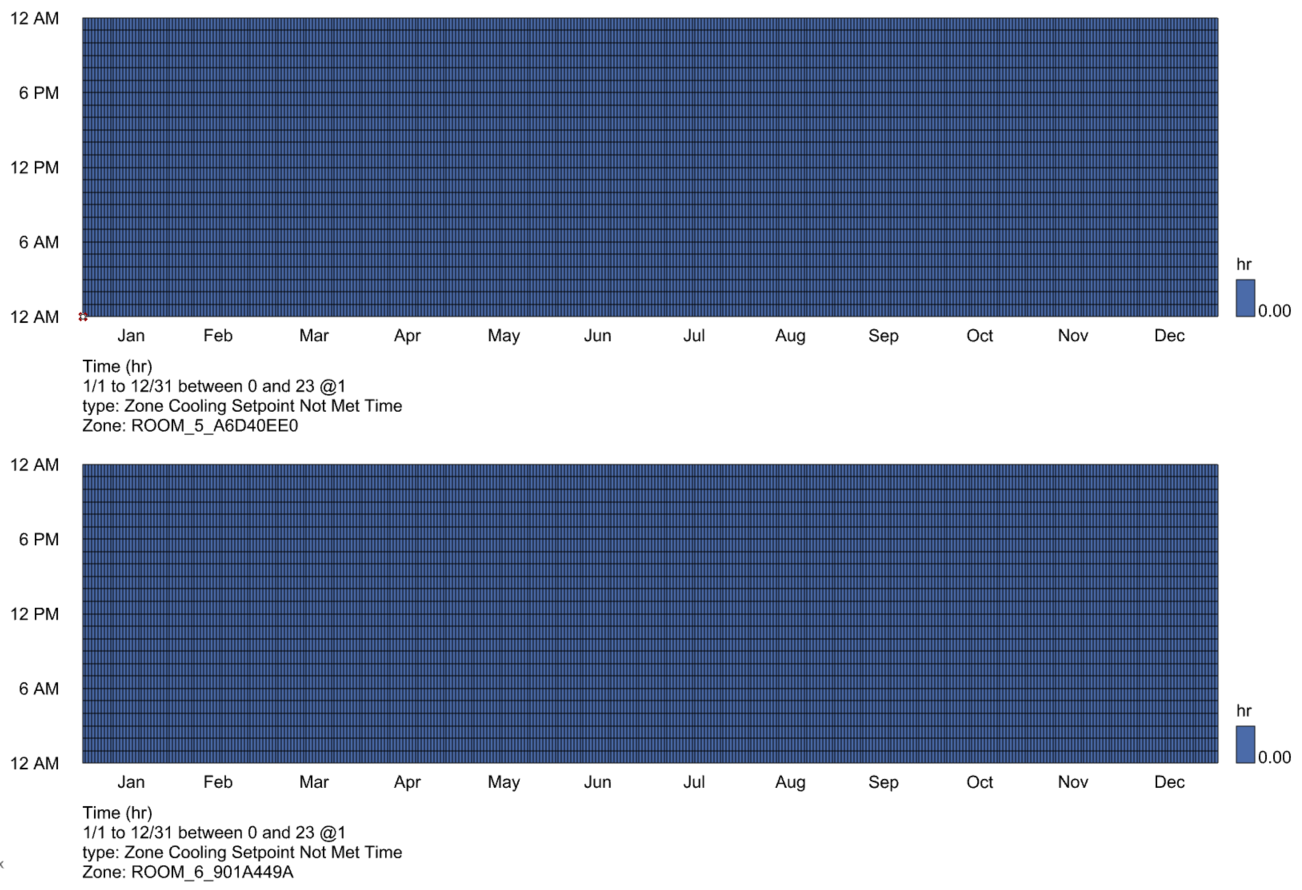Hi LBT community,
I’ve been reading Honeybee Energy’s documentation for VRF systems and found the following text for both of the VRF submodules in the DOAS subpackage and the HeatCool subpackage:
“All room/zone terminals are connected to the same outdoor unit, meaning that either all rooms must be in cooling or heating mode together.”
It seems that a key efficiency advantage of VRF systems is that they can move heat from one interior zone to another.
If there are equal heating and cooling loads simultaneously in a building, it can move the heat from a zone that needs cooling to a zone that needs heating without needing to run its outdoor units (the compressor still runs to move the refrigerant). When there are both heating and cooling demands in a building simultaneously, but they are imbalanced, the system will turn on some of the outdoor units to cover the discrepancy.
However, the above text from the documentation makes it seem like all zones need to be cooling or heating, and therefore we does this mean we can’t cool some rooms, but heat others? This seems to mean that we can’t make use of the efficiency of moving heat from one internal zone to another by moving the refrigerant in the system, and turning off some of the outdoor units?
I read the following thread where @chris mentions that you can ensure that each zone gets its own outdoor unit by grafting the input to the “HB HeatCool HVAC” component.
The following image link is to one of Chris’ screenshots from that thread which shows how this can be done:
Since the text from the documentation says that all zones are connected to the same outdoor unit, will using this technique allow the system to heat some rooms while cooling other rooms?
And will this technique also allow the system to take advantage of the efficiency of moving heat from one zone to another without running all of the outdoor units?
If not, perhaps there is a percentage based reduction I can make to some components of the end use results of the energy model to account for the efficiencies of turning off some of the outdoor units when some rooms require cooling, and others require heating?
Perhaps I am misinterpreting the wording of the documentation.
Please let me know ![]()
Anthony







